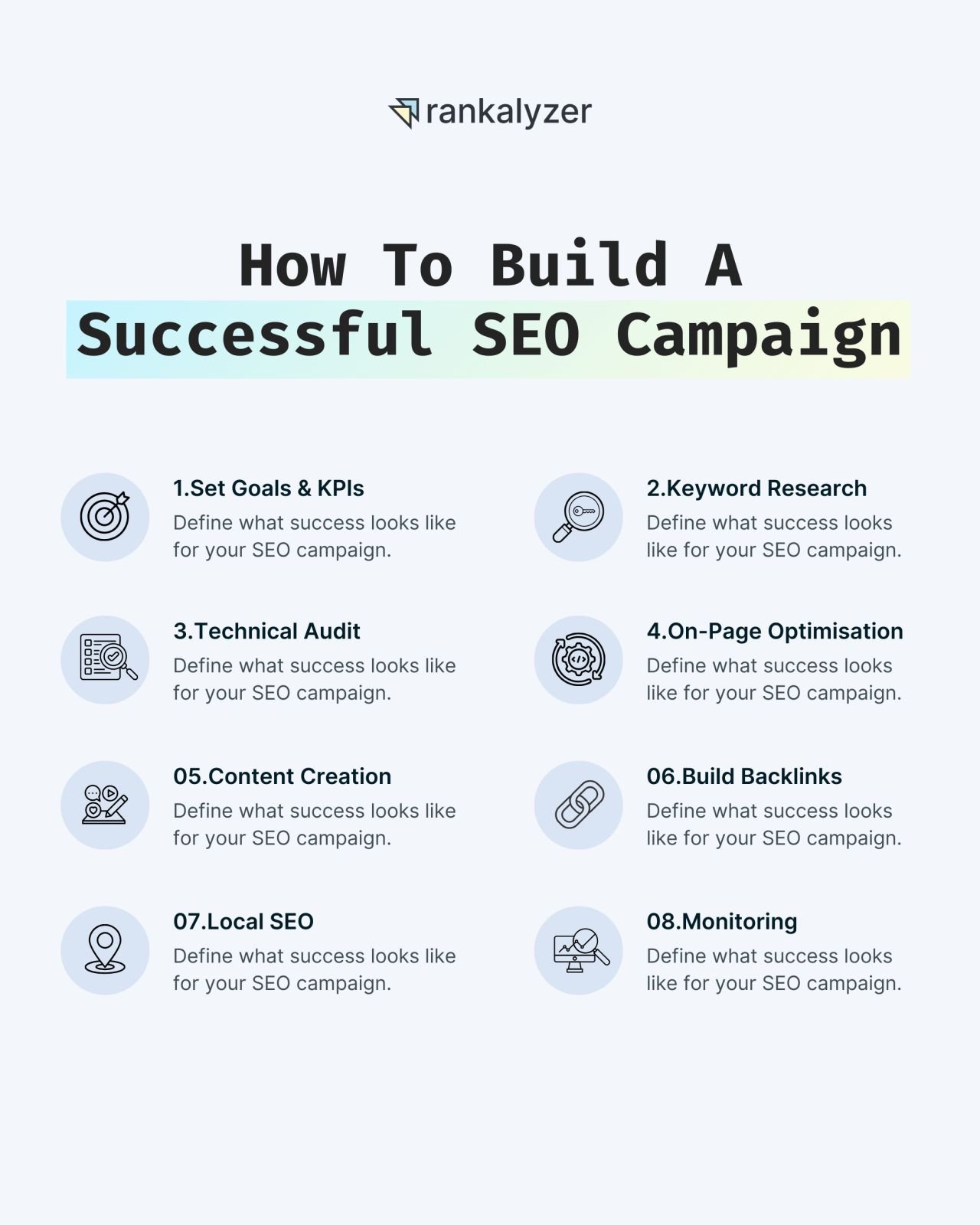How to build a successful seo campaign
Search Engine optimization does not exist in a vacuum. it is merely a part of a cohesive digital marketing strategy.
Building a successful SEO campaign involves a multifaceted approach that focuses on providing value to users while adhering to search engine best practices. Here's a breakdown of the key steps:
Image courtesy of Rank Analyzer
1. Define Clear Objectives:
What goals do you want to achieve with your SEO campaign?
Increase organic traffic?
Improve rankings for specific keywords?
Drive more leads or sales?
Having specific, measurable, achievable, relevant, and time-bound (SMART) goals will guide your strategy.
2. Conduct Thorough Keyword Research:
Identify relevant keywords with high search volume and low competition.
Use keyword research tools like Semrush, Ahrefs, or Google Keyword Planner to discover valuable keywords.
Analyze competitor websites to see what keywords they are targeting.
Consider long-tail keywords (more specific phrases) to attract a more qualified audience.
3. Create High-Quality Content:
Develop informative, engaging, and well-written content that satisfies user intent.
Optimize content around target keywords but prioritize natural language and readability.
Incorporate various content formats like blog posts, articles, videos, infographics, and interactive tools.
4. On-Page Optimization:
Optimize website elements to improve visibility to search engines.
Title tags: Include relevant keywords and accurately describe the page's content.
Meta descriptions: Write compelling summaries to entice clicks from search results.
Header tags (H1, H2, etc.): Structure content hierarchically with keyword-rich headings.
Image optimization: Use descriptive alt text for images.
URL optimization: Create short, descriptive URLs that include target keywords.
Internal linking: Connect relevant pages within your website to improve user navigation and distribute link equity.
Free 2025 Guide to On-Page SEO from Backlinko.
Image Courtesy of Search Engine Land
5. Off-Page Optimization:
Build high-quality backlinks from reputable websites.
Guest blogging: Contribute valuable content to other websites in your industry.
Broken link building: Find broken links on relevant websites and offer your content as a replacement.
Directory submissions: List your website in relevant online directories.
Public relations and outreach: Promote your content and brand to earn media coverage and backlinks.
6. Technical SEO:
Ensure your website is technically sound for search engine crawlers.
Website speed: Optimize page load times to improve user experience and search rankings.
Mobile-friendliness: Ensure your website is responsive and displays correctly on all devices.
XML sitemap: Submit an XML sitemap to search engines to help them crawl and index your website.
HTTPS security: Secure your website with HTTPS to protect user data and improve search rankings.
7. Track and Analyze Results:
Monitor your SEO progress using tools like Google Analytics and Google Search Console.
Track keyword rankings to see how your website is performing in search results.
Analyze website traffic to identify top-performing pages and areas for improvement.
Monitor backlinks to assess the quality and quantity of links pointing to your website.
8. Adapt and Improve:
SEO is an ongoing process.
Regularly review your SEO performance and make adjustments to your strategy as needed.
Stay updated on the latest SEO trends and algorithm changes.
Building a successful SEO campaign requires consistent effort, ongoing analysis, and a long-term perspective. By implementing the strategies outlined in this guide – from keyword research and on-page optimization to technical SEO and content marketing – you can steadily improve your search engine rankings, attract more organic traffic to your website, and achieve your business goals.
Ready to get started with MarkettHack? Contact Us today and let’s create a plan of attack.



